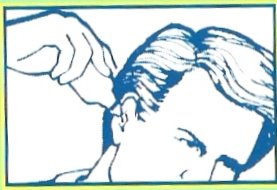Our local hospital puts on an "expedition" program every few months, during which they invite community members of note to spend a day behind the scenes, basically experiencing a day in the life of the hospital. For some reason, on this week's expedition, this group included me. Presumably, the hospital's goal was to make me a better-informed news person, so that I'd go back to Public Radioland with a raft of interesting story ideas.
Well, I have a few good ones. But there was a bigger raft (a catamaran, perhaps) of exciting, behind-the-scenes information that probably won't make it on Morning Edition. Fortunately, there are no such limitations here at 19 Minutes World Media Headquarters:
- The stylish, jaunty way to wear one's lab coat is hanging open. There were a few retired medical-types on the tour with us, and they all wore their coats buttoned as high as they'd go, looking (minus the bow ties) like a Bill Nye the Science Guy convention. One imagines this was the style in 1960. I looked much cooler. Jaunty or not, no one was actually confusing us with doctors, who by and large were wearing street clothes.
- I have a difficult time watching my 16-month old daughter get a flu shot, and yet I happily stood 18 inches from a guy's open chest and watched open heart surgery in action. If this had been on the Discovery Health Network, I would have changed the channel as fast as you could say "Berman and Berman".
- Doctors talk about a lot of things during surgery - especially during a heart bypass that could take 10 hours. Still, when you tell people that you talked about college football with a doctor as he performed surgery, it worries them. So I don't mention that. (Instead, I tell them it was just like watching "M*A*S*H", minus the practical jokes.)
- Why isn't there an asterisk after the "H" in "M*A*S*H"?
- After walking around the hospital for 10 hours, I no longer wonder why nurses would spend $150 on shoes. In fact, I wished I had spent $150 on shoes.
- There are a lot of things that medical science can insert into your body to help it recover from various conditions. Many of these look like parts of an alien spaceship. It's worth eating right and exercising so that none of them need to be inserted into your body.
- A few years ago, I did voiceover work for a CD-ROM manual for a medical device called a "thoracic excluder". Even as I read the glossary out loud, I wasn't exactly sure what the device did. After spending a day in the hospital and seeing the thoracic excluder in action, I'm still not sure what it does.
- Hospital humor: Take 15 people from the community, put them in a conference room, and present a lecture on gastric bypass surgery as you feed them lunch. Be sure to give them enormous slices of chocolate cake for dessert.
- Medical people love to use the term "modalities". I think it's because after studying medicine for more than a decade, they'd feel silly using the term "stuff".
- It's good to let the doctors and nurses know you're just being amusing - especially in a town with only one hospital, because you're liable to run into them again, most likely when you need part of an alien spaceship inserted into your body.




1 comment:
Knowing what goes on behind the scenes in hospitals has never been a source of comfort to me. And now I sorta feel bad for all those thoracics which have been excluded. I say........ inclusion!
Post a Comment